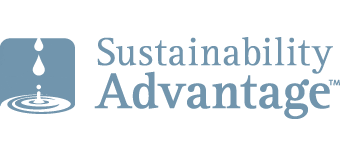7 Ways Net-Zero Public Procurement is a Super-Leverage Point

A refreshingly upbeat, hopeful report on the climate crisis was recently released: “The Breakthrough Effect: How To Trigger A Cascade Of Tipping Points To Accelerate The Net Zero Transition.” It was published in January by the Bezos Earth Fund, SystemIQ and the University of Exeter. It describes ten timely tipping points that provide “an opportunity to rapidly increase the deployment of zero-emission solutions and drastically cut global emissions.” The report also identifies three “super-leverage points” ‒ opportunities for actions that have relatively low cost or difficulty, and a relatively high chance of catalyzing a tipping cascade. I would humbly suggest that they missed a fourth super-leverage point: Net-Zero Public Procurement.
Net-Zero Public Procurement (NZPP) ensures that a government obtains the best value for money when purchasing the most climate-friendly goods and services from suppliers who are most committed to science-based net-zero targets. According to “The Breakthrough Effect,” to qualify as a super-leverage point in the system, NZPP must have these attributes:
- “Being the highest-leverage action within their own sector, based on combining low cost or difficulty with large effect on the development or deployment of zero emission solutions.”
- “Having an influence on at least one other major emitting sector that: a) positively supports the transition to a net zero economy; b) is high in impact; and c) is reasonably high in probability.”
Parsing these attributes into seven features of a super-leverage point, this is how NZPP satisfies all criteria.
Low difficulty
NZPP is relatively simple. It doesn’t replace existing government procurement systems; it builds on them in four non-disruptive ways.
- Requests for proposals (RFPs) already stipulate price, quality, and performance product specifications. NZPP simply adds a few low-carbon specifications for the desired goods and services.
- Suppliers’ disclosures already include information about their companies and operations. These data are maintained in their supplier profiles. NZPP simply asks suppliers to also disclose their commitment to net-zero targets. A short but comprehensive questionnaire like the Net-Zero Assessment Tool (NZAT) can score suppliers’ commitment to reducing their greenhouse gases (GHGs) quickly enough to meet net-zero reduction targets, and can award them bonus points for helping others reduce their GHGs. The score is added to the supplier’s profile.
- When appraising bids, the government already assigned weight to various product and supplier criteria. NZPP simply rebalances the weights / points allocation in the bid appraisal template to ensure that significant weights (e.g., 10-30% of the points) are allocated to how well the proposed goods and services meet low-carbon specifications, as well as to the supplier’s score on its commitment to science-based net-zero targets. That is, bid appraisal weightings make these climate-related product and supplier attributes matter enough to incentivize suppliers to improve them. This is the signature feature of NZPP.
- There are already terms and conditions in contracts with winning suppliers. NZPP simply adds a few more contractual Ts and Cs to reinforce the supplier’s commitment to its net-zero greenhouse gas (GHG) reduction plans described in its net-zero disclosures.
We know how to do all this, and have tools that facilitate the smooth integration of these add-ons into existing government procurement processes. The free, open-source Net-Zero Procurement Toolkit provides guidance, tools, and checklists to help. NZPP is not difficult.
Low cost
The government is going to spend money on the goods and services anyway. There may be a slight premium for acquiring the most climate-friendly, low-carbon products from suppliers who are the most committed to science-based net-zero targets. However, that potential premium is more than offset by government savings on incentives that would otherwise be necessary to equally engage those businesses in the race to net-zero, and avoidance of the staggering cost of government emergency relief for climate-related disasters if we fail to meet global net-zero targets, in time.
Large impact on deployment of zero emission solutions
Governments are offering incentives to encourage companies to use proven GHG reduction solutions like heat pumps, building retrofits, clean energy, electric vehicles, etc. But take-up on these offers has been too slow. When government suppliers are given significant points for their efforts to reduce their GHGs quickly enough to meet net-zero targets, they will be more inclined to implement zero-emission solutions so that they score higher than their competitors on heavily weighted criteria in government bids.
Reasonably high probability
Governments in the UK, the USA, and Canada are already requiring some suppliers to disclose their commitment to net-zero targets. NZPP extends that requirement to all suppliers and makes it matter. The probability of governments extending the net-zero disclosure requirement to more suppliers is high. The only uncertainty is whether they will do it quickly enough.
Another reason that NZPP is a high probability initiative is that it is politically attractive. It allows governments to act as customers, instead of as big, bad regulators. Governments are using their buying power as a market force. Their use of NZPP sends a clear signal that they are committed to net-zero targets and they prefer to deal with companies that share that commitment. If suppliers opt not to disclose, they simply score zero and will not earn any of the points allotted to supplier commitment to net-zero targets. If a supplier doesn’t meet net-zero product specifications or scores poorly on its commitment to net-zero targets, it still can be a supplier; it just loses significant points associated with those criteria. The government is not mandating suppliers to improve; it’s the suppliers’ choice to improve or to continue to score poorly and jeopardize their business with their government customers.
Influences at least one other major emitting sector
Governments procure goods and services from all sectors. According to the International Monetary Fund (IMF), government spending accounts for 20-60 percent of a country’s GDP. That is an enormously influential market force. NZPP is used in all government procurement, so it simultaneously applies to suppliers in all sectors, including in major emitting sectors. All suppliers are scored on their commitment to meeting net-zero targets, and leave significant points on the table if they are not aggressively reducing their GHGs. When governments at all levels – national, state / provincial / territorial, municipal / city – in all countries use NZPP, a critical mass of companies in all sectors is influenced, including major emitters.
Positively supports the transition to a net-zero economy
Allocating significant points to low-carbon products builds a global marketplace for climate-friendly goods and services. Allocating significant points to companies with a high commitment to near-term GHG reductions accelerates the transition to a global net-zero global economy in which companies with decarbonized business models earn the most points in bid appraisals, and thrive.
Further, governments can package their net-zero procurement implementation tools for easy deployment in other sectors, unleashing the buying power of the private, academic and not-for-profit sectors. When all sectors use net-zero procurement, the transition to a net-zero economy will go viral.
Bonus: Positively supports the transition to a sustainable economy
NZPP is not only a super-leverage point that accelerates the transition to a net-zero economy; it also accelerates the transition to a sustainable economy. How? Net-zero public procurement is a subset of sustainable public procurement. Sustainable public procurement (SPP) ensures that a government obtains the best value for money when purchasing the most sustainable goods and services from the most sustainable suppliers. It not only focuses on net-zero energy and GHG factors, but also on other important environmental and social factors. It adds additional sustainability considerations to the same four procurement system elements – product specifications, supplier disclosures, appraisal weightings and contractual terms – on which NZPP builds. That is, it uses the NZPP blueprint to accelerate the transition to an environmentally restorative, socially just, and economically inclusive economy. NZPP sets the table for SPP.
So NZPP not only satisfies all criteria of a super-leverage point for the transition to a net-zero economy; it is also a super-leverage point for a sustainable economy. The exponential ripple effect of NZPP throughout the global economy ensures we are all winners in the race to net-zero.
Governments have been telling us for years that we need to reduce emissions at pace if we are to avert climate catastrophes and preserve a habitable planet. It’s time they put their procurement where their mouth is and exploited the NZPP super-leverage point.
Please feel free to add your comments and questions using the “Leave a reply” comment box under the “Share this entry” social media symbols, below. For email subscribers, please click here to visit my site and provide feedback. Slides that explain net-zero procurement and overview the referenced supporting tools are included in my Master Slide Decks, to which anyone can subscribe.



